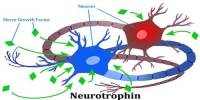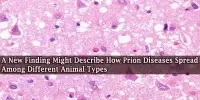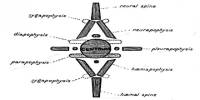Antibiotics save lives, but they also destroy the healthy bacteria that exist in the human gut. Some people are at risk of getting inflammation or opportunistic infections like Clostridioides difficile after receiving antibiotics. Antibiotics used indiscriminately on gut microorganisms can also contribute to the spread of drug resistance.
MIT engineers have devised a novel approach to help safeguard the normal flora of the human digestive tract in an effort to lessen such hazards. They designed a bacteria strain that is suitable for human eating to produce an enzyme that safely breaks down a family of antibiotics known as beta-lactams. Ampicillin, amoxicillin, and other routinely used antibiotics are among them.
In a mouse trial, the researchers discovered that when this “living biotherapeutic” is given with antibiotics, it maintains the gut microbiota while keeping drug levels in the circulation high.
“This work shows that synthetic biology can be harnessed to create a new class of engineered therapeutics for reducing the adverse effects of antibiotics,” says James Collins, the Termeer Professor of Medical Engineering and Science in MIT’s Institute for Medical Engineering and Science (IMES) and Department of Biological Engineering, and the senior author of the new study.
The lead author of the article, published today in Nature Biomedical Engineering, is Andres Cubillos-Ruiz PhD ’15, a research scientist at IMES and the Harvard University Wyss Institute for Biologically Inspired Engineering.
Miguel Alcantar and Pablo Cardenas, MIT graduate students, Nina Donghia, a Wyss Institute staff scientist, and Julian Avila-Pacheco, a Broad Institute research scientist, are among the other writers.
If the antibiotic action is not needed in the gut, then you need to protect the microbiota. This is similar to when you get an X-ray, you wear a lead apron to protect the rest of your body from the ionizing radiation. No previous intervention could offer this level of protection. With our new technology, we can make antibiotics safer by preserving beneficial gut microbes and by reducing the chances of emergence of new antibiotic-resistant variants.
Andres Cubillos-Ruiz
Protecting the gut
Microbes in the human gut have been discovered to have essential roles in metabolism, immunological function, and nervous system function over the last two decades.
“Throughout your life, these gut microbes assemble into a highly diverse community that accomplishes important functions in your body,” Cubillos-Ruiz says.
“The problem comes when interventions such as medications or particular kinds of diets affect the composition of the microbiota and create an altered state, called dysbiosis. Some microbial groups disappear, and the metabolic activity of others increases. This unbalance can lead to various health issues.”
Infection with C. difficile, a bacteria that dwells in the gut but rarely causes harm, is one of the most serious complications that can develop. Antibiotics, on the other hand, can kill off the bacteria that compete with C. difficile, causing diarrhea and colitis. C. difficile infects over 500,000 people in the United States each year, resulting in approximately 15,000 deaths.
Probiotics (mixtures of beneficial bacteria) are occasionally prescribed to persons taking antibiotics, but those probiotics are usually vulnerable to drugs as well, and they don’t fully mimic the gut’s natural microbiota.
“Standard probiotics cannot compare to the diversity that the native microbes have,” Cubillos-Ruiz says. “They cannot accomplish the same functions as the native microbes that you have nurtured throughout your life.”
The researchers opted to utilize engineered microbes to protect the microbiome from antibiotics. They genetically modified Lactococcus lactis, a microbe commonly used in cheese production, to produce an enzyme that breaks down beta-lactam antibiotics. Antibiotics prescribed in the United States account for over 60% of all prescriptions.
When these bacteria are taken orally, they populate the intestines for a short time before secreting the enzyme beta-lactamase. This enzyme then broken antibiotics that make it to the digestive system down.
Antibiotics enter the bloodstream predominantly through the stomach, thus they can still circulate at high levels in the body when taken orally. This strategy could possibly be combined with injectable antibiotics that make their way to the intestine. The modified bacteria are expelled through the digestive tract once their task is completed.
Using engineered bacteria that degrade antibiotics poses unique safety requirements:
Antibiotic resistance is conferred on harboring cells by beta-lactamase enzymes, and their genes may easily move between bacteria.
To overcome this, the researchers used synthetic biology to recode the bacterium’s enzyme synthetization process. They split the beta-lactamase gene into two sections, each encoding a fragment of the enzyme.
Because these gene fragments reside on different pieces of DNA, it’s quite improbable that they’ll be transferred to another bacterial cell.
These beta-lactamase fragments are exported from the cell and recombine outside the cell, restoring enzymatic function. Because the beta-lactamase is now free to spread throughout the environment, its activity becomes a “public good” for gut bacteria. This stops the modified cells from outperforming the native gut bacteria.
“Our biocontainment strategy enables the delivery of antibiotic-degrading enzymes to the gut without the risk of horizontal gene transfer to other bacteria or the acquisition of an added competitive advantage by the live biotherapeutic,” Cubillos-Ruiz says.
Maintaining microbial diversity
The researchers put their method to the test by giving the mice two oral doses of the modified bacteria for every ampicillin injection. When the modified bacteria reached the colon, they started producing beta-lactamase.
The amount of ampicillin circulating in the bloodstream in those mice was the same as in mice that did not receive the altered bacteria, according to the researchers. In the intestines, animals who got modified bacteria had significantly more microbial diversity than mice who just received antibiotics.
Microbial diversity in the mice reduced considerably after they were given ampicillin. In addition, none of the mice given the modified bacteria got opportunistic C. difficile infections, whereas all of the mice given antibiotics had significant amounts of C. difficile in their guts.
“This is a strong demonstration that this approach can protect the gut microbiota while preserving the efficacy of the antibiotic, as you’re not modifying the levels in the bloodstream,” Cubillos-Ruiz says.
The researchers also discovered that removing the evolutionary pressure of antibiotic treatment reduced the likelihood of gut microorganisms developing antibiotic resistance following treatment.
They did, however, uncover several antibiotic resistance genes in the germs that survived in mice who were given antibiotics but not the modified bacteria. Antibiotic resistance will be exacerbated if those genes are passed on to dangerous bacteria.
The researchers now want to test a version of the treatment in those at high risk of acquiring acute diseases caused by antibiotic-induced gut dysbiosis, with the hope that it could someday be used to protect anyone who needs antibiotics for infections outside the gut.
“If the antibiotic action is not needed in the gut, then you need to protect the microbiota. This is similar to when you get an X-ray, you wear a lead apron to protect the rest of your body from the ionizing radiation,” Cubillos-Ruiz says.
“No previous intervention could offer this level of protection. With our new technology, we can make antibiotics safer by preserving beneficial gut microbes and by reducing the chances of emergence of new antibiotic-resistant variants.”
The Defense Threat Reduction Agency, the Paul G. Allen Frontiers Group, the Wyss Institute, and a National Science Foundation graduate research fellowship all contributed to the study.
















